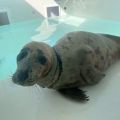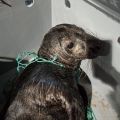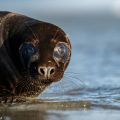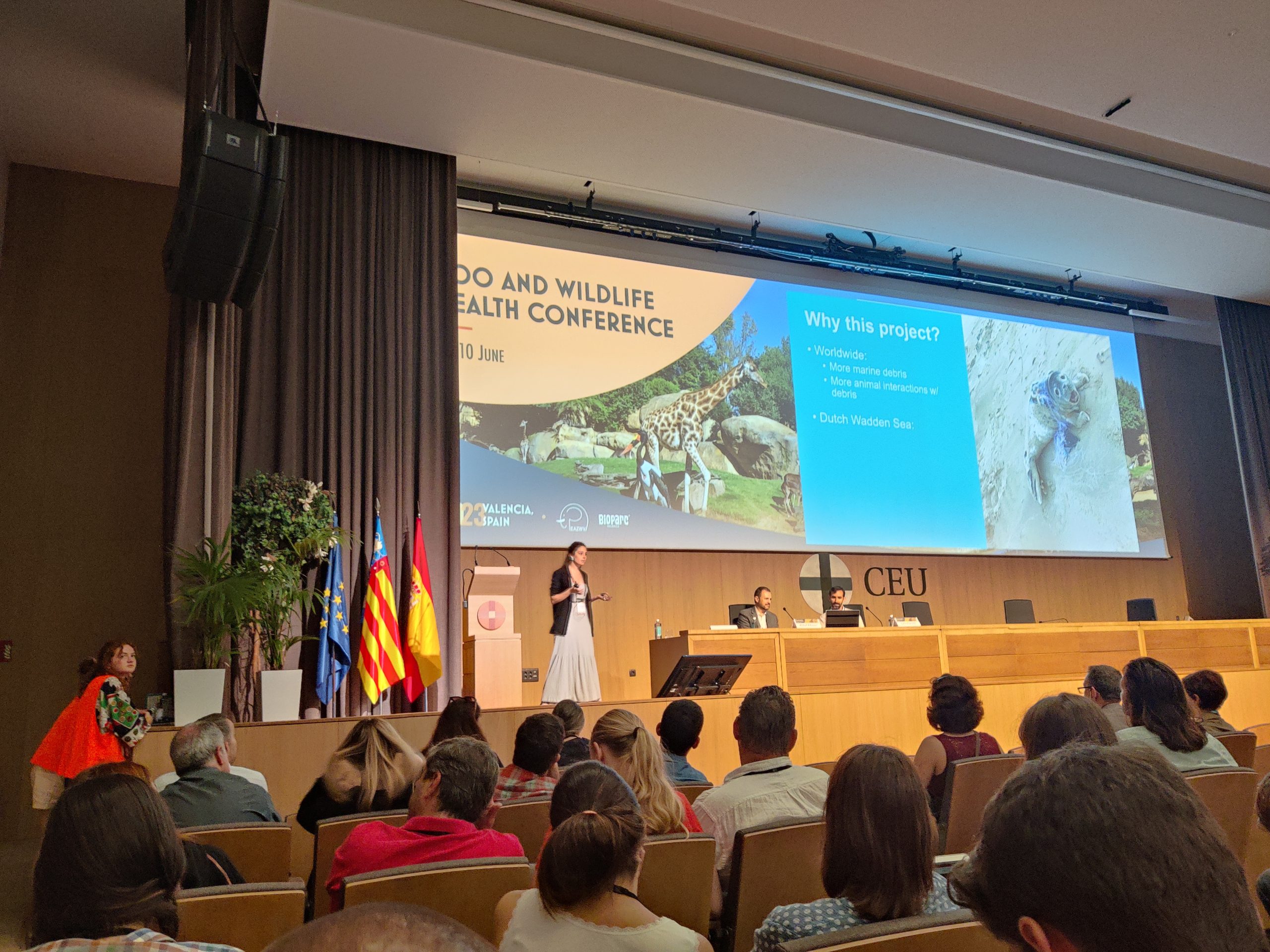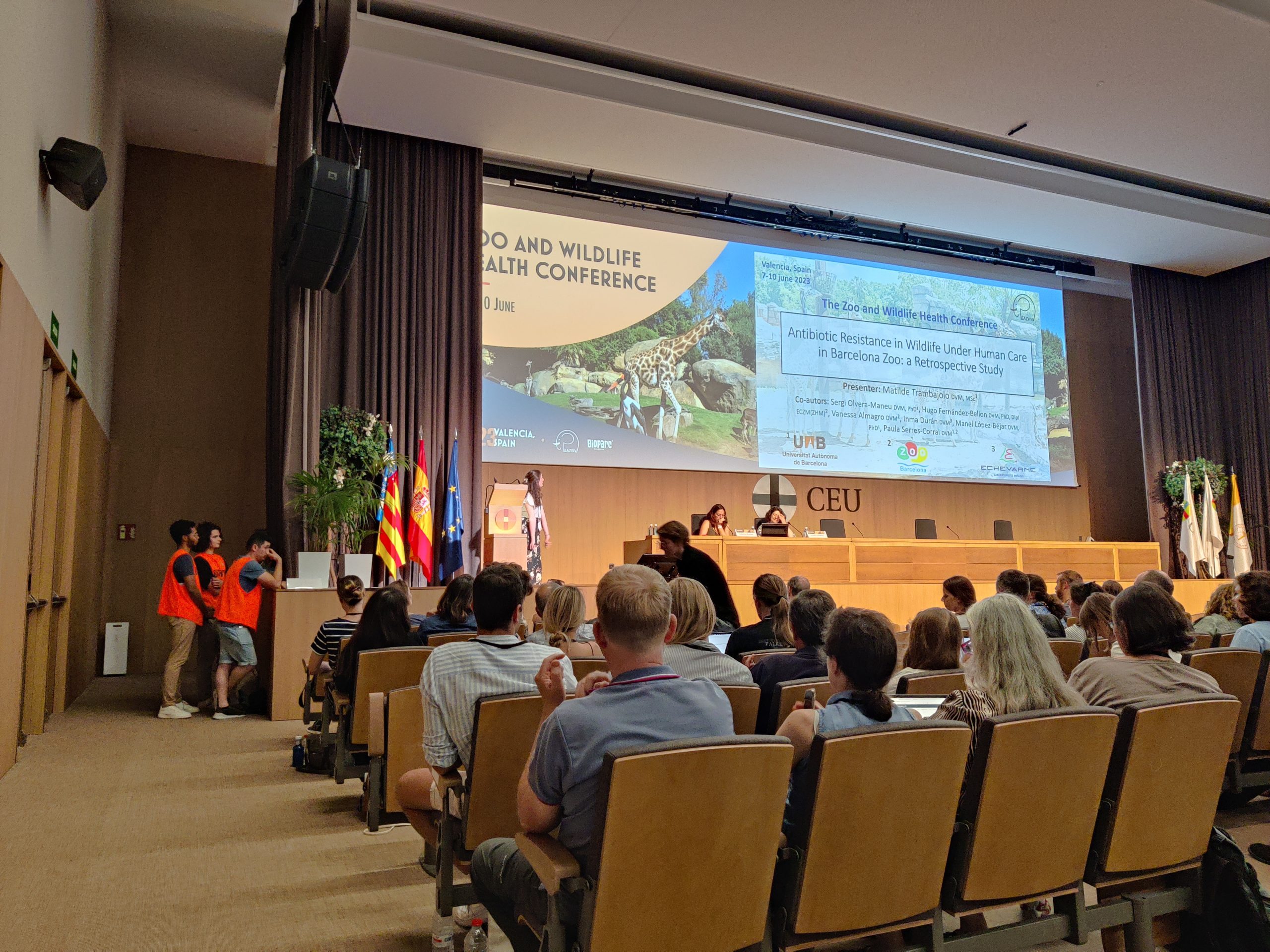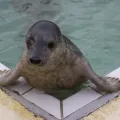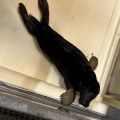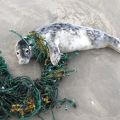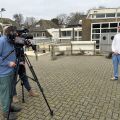Zoo en Wildlife health conference 2023
From June 7-10, Matilde Trambajolo (vet intern) and Anna Salazar Casals (vet) attended the Zoo and Wildlife Health conference 2023, which took place in Valencia.
As the organisers mentioned: "This conference provides a unique platform for members of the veterinary community, wildlife enthusiasts and conservationists from all over the world, to come together, discuss, and exchange knowledge on various issues, including the latest advancements in research and best practices in wildlife conservation, veterinary medicine, and animal welfare. As we continue to confront a rapidly changing world of emerging diseases, habitat loss, and climate change, the work of zoo and wildlife veterinarians is more important than ever. Our profession plays a crucial role in both the conservation of endangered species and the protection and well-being of the animals under our care. Our commitment, expertise, and insights are invaluable resources for the broader scientific community, policymakers, and the public."
The conference was very interesting, the content very nice and informative, and the people very nice and willing to learn and collaborate.
Matilde presented a project she did for her master thesis at Barcelona Zoo. This project looked at antibiotic resistances within the zoo. She looked at different samples from different animals and checked for antimicrobial resistance. Matilde presented her results and answered all the questions asked by the public in a calm and professional way. She was confident in herself and presented very well. This is the summary of her presentation:
"The potential for emergence of antibiotic resistance (AR) in zoo settings poses a challenge to the adequate treatment of individuals and a potential threat to public health. This retrospective study aimed to characterize AR in mammals kept at Barcelona Zoo between 2016-2021. Bacterial cultures (n=1026) were recovered from clinical records, of which 29% were positive with available antibiograms (n=298). Of these, 238 antibiograms were selected according to a “first-bacterial-genus-per-isolate-per-patient” methodology, mostly from Bovidae (n=63), Delphinidae (n=41) and Hominidae (n=32). AR was assessed including yearly multidrug resistance (MDR) occurrence (i.e., bacteria resistant to three or more antibiotic classes)a, generation of a cumulative antibiogram (CA) (i.e., susceptibility rate of the ten most isolated bacteria to the ten most used antibiotics)b,c, and non susceptibility trends for selected pathogens. The most frequently isolated bacteria were Escherichia spp. (n=78), Pseudomonas spp. (n=44) and Staphylococcus spp. (n=42). Yearly MDR rates oscillated between 28% (9/32 isolates, 2018) and 72% (13/18, 2016; 20/28, 2019), without evolution identified. The CA revealed low susceptibility rates of most Gram-negative bacteria to ampicillin (0-70%; x̄=15%) and cefalexin (13-81%; x̄=35%). Likewise, Pseudomonas spp. presented low susceptibility rates to numerous antibiotics (0-86%; x̄=43%). Annual non-susceptibility rates significantly decreased for Escherichia but increased for Pseudomonas and Enterococcaceae (p<0.05). Overall, AR was demonstrated for bacterial isolates at Barcelona Zoo, underscoring the need for a rational use of antibiotics. Furthermore, this study highlights how CA can serve as a guide to empirical prescriptions when cautiously elaborated and interpreted."
Anna presented the results of the article published in August 2022 about seal entanglements. The public was very happy with the content of the talk and were surprised with the results Anna showed. This is the summary of Anna's presentation: "In recent decades, the amount of marine debris in our oceans has increased, leading to more interactions between debris and animals. Increased interactions consequently lead to more entanglements, modifying an animal’s normal behaviour and potentially affecting its survival. The current study collected information on two phocid species, harbour (Phoca vitulina) and grey seals (Halichoerus grypus), that were affected by marine debris over 11 years (2010-2020), along the Dutch coast (n=145). The data includes strandings and sightings of live and dead animals reported to one of the three Dutch seal rehabilitation centres. The results of our study show that: (i) the number of entangled seals has quadrupled over the study period, (ii) 67% of the entangled animals were juveniles, (iii) the number of entangled grey seals was more than 4 times higher than that of harbour seals, whereas harbour seals were more likely to ingest debris, and (iv) 88% of the debris causing entanglements came from the fishing/boating industry. The species differences we found can be explained by differences in their behaviour, their foraging strategies, and their habitat preferences. There was no consensus when reporting lesions or entangling material, hence no further analysis was possible. Future research in this field will enormously benefit from standardizing data collection and for this purpose we present a new detailed stranding form. Despite increased public awareness about the adverse environmental effects of marine debris, more initiatives and policies are needed to ensure the protection of the marine environment in the Netherlands."
Thanks to this conference, both Matilde and Anna have managed to connect with many veterinarians van around the world and spread the word about the work done by and at Sealcentre Pieterburen. Furthermore, several veterinary students from many European Universities attended this conference and were interested in our educational programs, both in the veterinary and sealcare departments.
